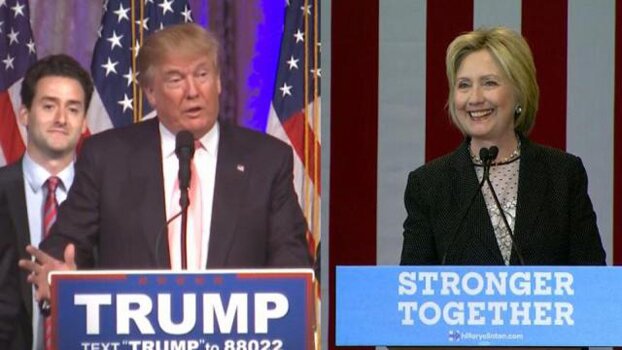
The Electoral College fascinated me the moment I learned about it in seventh-grade social studies. I was perplexed that a system was intentionally put in place that stood between the American voter and the person elected their President.
I was so perplexed, in fact, I started a petition to have it removed. Not some bullshit online petition, either: a legit collection of handwritten signatures. Twelve-year-old me went door-to-door, so to speak, collecting signatures from my teachers, fellow students and anyone else I could shove a clipboard in front of.
As you might’ve surmised, I was ultimately unsuccessful in that endeavor way back in 1990. The Electoral College is alive and well despite my efforts back then, and despite coming up 200,000 or so short in the popular vote, Donald Trump has been named our new president by virtue of it. The election result has led many to call for the Electoral College’s abolishment as we often hear any time a president loses the election despite winning the popular vote.
It seems quite clear why the popular vote should determine the presidency like it does so many other offices. It seemed quite clear to me when I begged for signatures long ago. But my stance on the Electoral College has shifted over the years and if seventh-grade James Curle approached me today asking for my signature on his petition, I’d politely decline. Here’s why.
The U.S. is like many other nations: pockets of densely populated urban areas surrounded by vast, sparsely populated areas and/or farmland. From state to state, there can be a rather large disparity in population size. The population of the largest city in Wyoming–Cheyenne–is roughly 1.5 times the size of Apex. The population of the largest city in the U.S., New York City (with more that eight million residents), is larger than the combined populations of Wyoming, Vermont, Alaska, North and South Dakota, Delaware, Montana, Rhode Island and Maine–with room to spare.
The needs of urban residents are often different than those outside the city limits. The price of a gallon of fuel may not mean much to someone who lives in a large city without a car; it means a great deal to daily commuters and farmers.
Since different regions often have different needs, you can correctly assume they tend to vote differently as well. Urban areas tend to vote to the left; rural areas to the right.
If elections were settled strictly by popular vote, the voting power of NYC, LA, Chicago and the other large metro areas would completely overwhelm smaller states. A candidate would have zero motivation stumping in the so-called “flyover” states. Win the cities and you win the election.
The Electoral College exists to even out this imbalance in power. By awarding an electoral vote for each senate and house member in the U.S. Congress, a state like Wyoming has more relative political power than based on the popular vote. I mentioned earlier the nine least-populated states in the U.S. Their combined 29 Electoral Votes outweigh New York state’s 27 and are nearly three times more than Virginia’s 11, a state whose population is roughly equal to the combined population of the bottom nine.
The Electoral College gives a voice to states with minimal populations they wouldn’t have strictly using the popular vote method.
But the Electoral College isn’t perfect. The traditional winner-take-all method of awarding electoral votes to a candidate is flawed, in my opinion, for two reasons.
One, it gave rise to “swing states” with large numbers of electoral votes that are closely contested each election. Both parties focus large amounts of time, effort, money and even legislative measures to ensure they win these states at the expense of essentially ignoring other states both large and small.
Winner-take-all also means many folks feel like their vote is wasted in medium and larger states that almost always vote opposite of their views. If you’re a Republican in California or a Democrat in Texas, can you be blamed for feeling like your presidential vote disappears into the ether every four years?
I think there’s a way to retain the Electoral College in a modified form without losing its ability to provide a voice for the sparsely populated areas of our country. In a nutshell:
– Determine your state’s winner using the popular vote, per usual
– Award the winning candidate both of the Senate’s two electoral votes
– Award the second-place candidate a percentage of the House’s electoral votes based on that candidate’s percentage of the popular vote
– Award the winning candidate the remaining electoral votes
– Third-place candidates receive nothing (sorry)
Here are some examples of how that would work. In North Carolina, our 15 electoral votes would be divvied up thusly (using popular vote numbers from Google as of 11-10-16):
– Trump wins the popular vote, receives electoral 2 votes
– Hillary receives 6 of the 13 “House” votes (47% * 13)
– Trump receives the 7 remaining votes for a total of 9
In California, Republicans out west help Trump receive 17 electoral votes versus Hillary’s 38. Texas Democrats net their candidate 15 to help balance out the 23 earned by Trump.
Smaller states will still essentially be winner-take-all states. Three-vote states remain as such. A four-vote state would require the losing candidate to receive at least 49.5% of the vote to divide the remaining two votes. The split really only starts making an impact on the larger states with more House votes to divide.
But that’s a good thing. It keeps a premium in place of outright winning the smaller states, preserving the current intended effect of the Electoral College, while eliminating the wasted votes in the larger states and negating the “swing” effect of large states that are closely contested. You can lose Ohio, Michigan, Pennsylvania, etc., and not be assured of losing the election.
So how would this election have shaken out using this modified plan versus the current model? Assuming current results hold in the states that have yet to declare, Trump still takes it but in a much more closely contested election: 277-261 (vs 306-232). This result falls far more in line with the popular vote.
It may seem unfair that a candidate can receive more votes and lose, but there’s a good reason why we can’t get rid of the Electoral College. It just needs a little more tweaking, is all.
.








